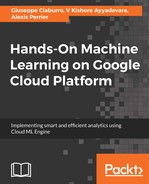NLU consists of reading a text expressed in natural language; determining its meaning by attributing a meaning to terms, sentences, and paragraphs present in it, and making inferences about these elements in order to elicit their explicit or implicit properties. In particular, one of the most salient issues in modeling a textual representation is to capture semantic relationships between concepts. To solve this task, several methodologies have been proposed in the literature, some of which talk of access to external knowledge bases. Others, instead, construct semantic distributive spaces, analyzing the content of the text collection without making use of prior knowledge.
Under the NLU definition, there is a wide range of computer applications, ranging from simple operations such as short commands given to robots, to complex operations, such as full comprehension of texts. In the real world, there is now a widespread use of algorithms based on NLU; for example, classification of text for attribution of labels in an email does not require a thorough understanding of the text, but it needs to deal with many vocabulary items.
The process of disassembling and parsing of text input is very complex, because of the occurrence of unknown and unexpected features in the input and the need to determine the appropriate syntactic and semantic schemes to apply to it (factors that are predetermined) when outputting the language. In the following diagram, you can see a flowchart of the NLU process:

NLU, helps us to analyze semantic features of input text and extract metadata from content, such as categories, concepts, emotion, entities, keywords, metadata, relations, and semantic roles. Through NLU, the developer makes a translation of text into a machine-readable formal representation, making relevant aspects of its content explicit.
